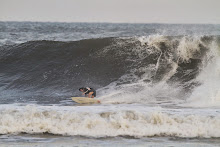
Take my sabbatical out here on Catalina Island as Exhibit A. For the last 20 years or so, I’ve been studying the neural basis of learning and memory in sea hares. These are sea-going slugs that only live a year. They mainly eat and mate and lay eggs and die. But of course, that is what all species do. In the case of sea hares, though, there is precious little more to the story. Or is there?
Neurobiologists have been using sea hares since the 60’s, and I since the 90s, to learn the secrets of how neural systems make behavior happen. More particularly, what happens in sea-hare brains when they learn? How does an intervening experience change what happens in an animal’s brain so that a given stimulus, say a water squirt, now causes a DIFFERENT behavioral response? Kind of a hare-brained question, eh?
The most commonly studied form of learning is sensitization. Traumatize an animal with some heinous experience, and it gets jumpy. It reacts much more strongly to any and all stimuli than it did before. Squirt a water-jet on its siphon and a sensitized sea hare starts pulling that appendage in much faster and longer.
Now neurobiologists are in some ways not very imaginative. They found early on that if they gave a strong electric shock to a sea hare, its reflexes to mild stimuli were dramatically strengthened after the shock. 40 years and numerous breakthroughs and awards later (including Nobel prize in medicine in 2000), neurobiologists still give electric shock to cause sensitization. We now know a whole huge amount about what happens in the sea-hare brain when it gets an electric shock. And yes, the knowledge from this science is already helping humans with neurological afflictions.
But no one knows the slightest thing about sensitization in nature. The natural history of the poor, hapless sea hare is barely known at all! That’s where my students and I come in. We are hell-bent on figuring out how sea hares use sensitization “out there”. There are no electric shocks in the ocean, so that stimulus won’t do. Well then, what other trauma might there be? LOBSTERS! Those creepy crawly delicious California spiny lobsters.


No comments:
Post a Comment